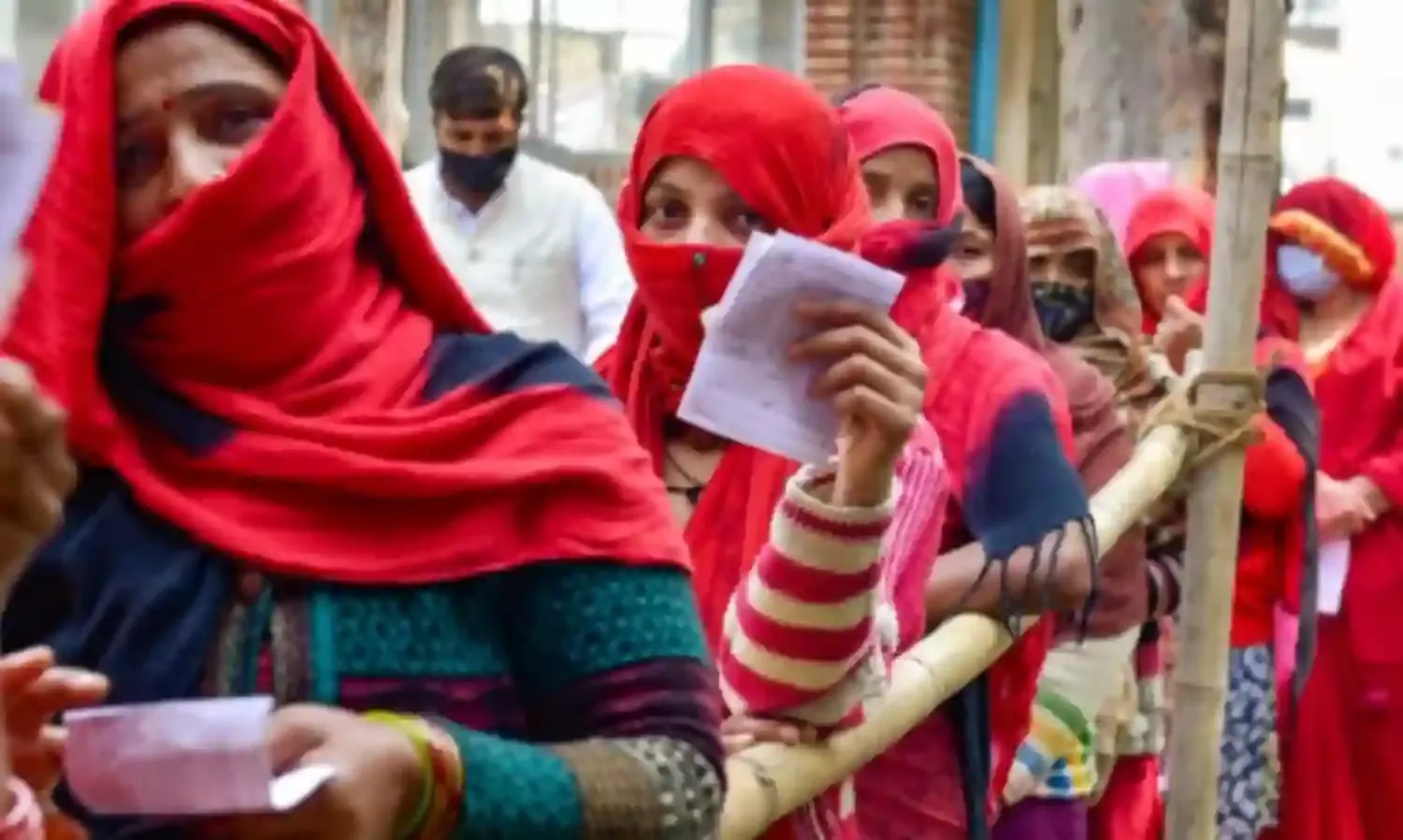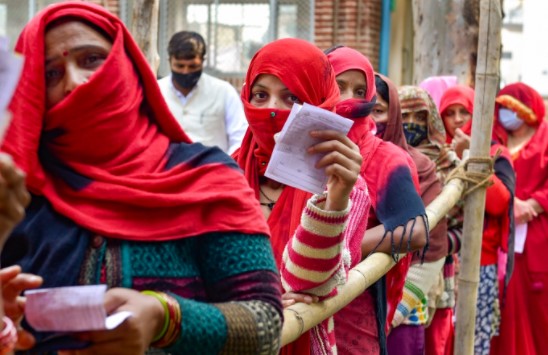“Lets See” Say the Voters in Mustafabad As UP Polls Gather Momentum
SAEED NAQVI

The mild mannered men of Mustafabad near Lucknow in Rae Bareli, furrow their brows, pause in deep thought and, with anxious resignation say “dekhiye”, a somewhat elongated “let’s see”.
Their style of resignation has not changed since 1952 when UP Chief Minister, Pandit Govind Ballabh Pant took away their lands, in strict adherence to the Congress promise of land reforms, despite Nehru’s promises to the contrary. “Reforms may be delayed so the Muslims can create a middle class, just as the Hindus have done.” Mustafabadis abide by loyalties. “He was obviously overruled.”
I turn up in Mustafabad, all wrapped in nostalgia when UP elections are in full swing.
I have always enjoyed covering elections. Restrained by a month long covid spell, I was feeling particularly left out even as traffic picked up of returning pundits and progeny, all journalists, with stories of fierce fights. It was too much to resist. So I persuaded my wife to join me on a long drive.
New caste combinations were being forged, requiring attention. This is primarily a function of the caste pyramid being so cleverly designed as to leave provision for every layer to have layers below it. Hindutva enthusiasts are quite clear that democracy, indeed, the Constitution, does not really suit the social structure created in ancient times. The BJP’s social engineers are meanwhile working with tooth-chisel and hammer to create cleavage at the micro level. Ironically, with its own hands, the BJP, is ripping apart the tapestry of caste.
This contradicts the basic purpose of those who wish to keep the cast pyramid intact. If the other backward castes are to be broken up into Yadavs, Kurmis and Lodhs, and so on, the strategic aim of Hindu consolidation is instantly compromised.
Communalism in the past 30 years has been a political trick to control caste disruption. The Muslim was targeted as the “enemy” to keep the caste hierarchy in line. The emergence of Mulayam Singh Yadav and Mayawati in UP; Laloo Prasad Yadav, Nitish Kumar and Ram Vilas Paswan in UP and Bihar was traumatic for the two ruling class parties, the BJP and the Congress.
Even so, the spread of communalism in Bihar has been milder compared to UP, for which there is a reason. Since Independence, the power structure in UP was coterminous with the classical caste pyramid. UP had a spate of Brahmin Chief Ministers beginning with Pant. Prime Ministers, likewise, were Brahmins upto Atal Behari Vajpayee. Brief spells of Chandrashekhar, V.P. Singh, Charan Singh, Inder Kumar Gujaral and Dewe Goda were aberrations. The traditional caste logic did not attend their rise to the highest office. This is why terms were short.
Bihar power structure was not a cone but two parallel columns – Srikrishna Sinha, a Bhumihar and Anugrah Narain Sinha, a Thakur. The Congress was not Brahmin dominated. The other fact which helped tone down communalism in the state is seldom noticed. When the Communist Party split into CPI and CPM, Bihar was the only state where the party remained unified, under a host of leaders many of them Bhumihars. This is where Kanhaiya Kumar comes from. Now, ofcourse, he has snapped his CPI ties to help strengthen Rahul Gandhi’s left flank.
In Mustafabad, my random interlocutors range from Lala, a Maurya by caste attached to the family for generations and scions of the fading ruling class. Discussions yield three broad assessments. One suggests that Yogi Adityanath faces strong head winds. The pandemic, floating bodies in the Ganga, economic distress, unemployment, poor health care, angry farmers and police excesses on dalits and Muslims are all cited as reasons.
The other group hedges its bets: the wave is against the BJP but the party will retain power. How does one explain that? Absence of millions of names from the electoral roles, a conniving bureaucracy and police, fiddling with postal ballot, and Pegasus-like interference with voting machines. The third view is the most convincing: people, not the opposition, are fighting the BJP this time. If true, the scale of victory might surprise even Akhilesh.
Scenarios are easy to sketch but they are liable to miss strands in an intricate mosaic. With the informality available only in villages and qasbahs, three youngmen from the neighbourhood amble in, their mouths full of news laced with gossip. Farman Haider Naqvi, 23, is a bright block level Congress worker from Mustafabad. He has just met a “senior Congress leader” who came all the way from Rae Bareli to “enthuse” party workers. The “senior” Congressman was none other than Kishori Lal Sharma, a retainer of the Gandhi family who has looked after the RaeBareli and Amethi constituencies for the family for decades.
Local gossip casts Sharma as a “Brahman wadi”, or one who protects Brahmin interests. It follows, therefore, that Sharma had come to Mustafabad (in Unchahar assembly segment) not to support Atul Singh the Thakur Congress candidate, but to clandestinely tilt the scales in favour of a fellow Brahmin, Manoj Pandey of the Samajwadi party. This leaves two groups miffed, Yadavs and Mauryas for different reasons.
Yadavs, whose natural habitat should be the SP, is on this occasion livid with SP candidate, Pandey, who, in the past, has been harsh on Yadavs in a high profile criminal case. Maurya are hopping mad for a different reason: instead of fielding Ashok Maurya, Akhilesh has given the SP ticket to Pandey. Yadavs and Mauryas have coined a joint slogan:
“Akhilesh tujhse bair naheen
Manoj Pandey teri khair naheen”
(We are not against you, Akhilesh,
We are settling scores with Manoj Pandey)
This cameo provides a worm’s eye view of elections in UP. The nine hour drive back to New Delhi gave me a more elevated view when my wife handed me the latest issue of The Economist. Two pieces, spread over five pages will not amuse Narendra Modi. The report focused on UP speculates that the Yogi may well have to resume his traditional “temple duties” when results are in.




